Here’s how 7 iconic migratory bird species spent the spring & summer
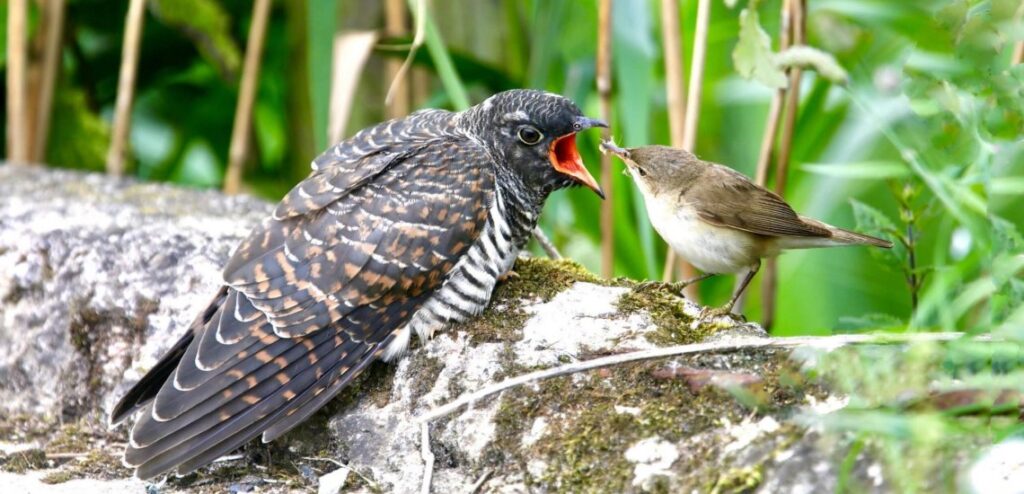
Digging metre-long tunnels, luring away predators, stealing other bird’s nests… the breeding season is never dull for these seven bird species, which are now leaving Europe for the warmer climate of Africa.
By Jessica Law
This article is part of our Spring Alive programme, which aims to inspire and educate children across Africa and Eurasia about the wonders of nature and bird migration. The 2021 Spring Alive season has been made possible with the continuing support of HeidelbergCement.
Right now, many migratory birds are returning to Africa for a much-deserved rest after the intensive activity of the breeding season. They will use the coming months to moult their old feathers and grow shiny new plumage to impress next year’s mate. They will also eat as much as they can, building up their fat stores before setting off next spring to start the process all over again.
The Spring Alive season for Africa is just about to start, and we are delighted to welcome two new countries to our network: Senegal and Ivory Coast. Across the continent, teachers, parents and volunteers will be educating children about birds and nature through our seven Spring Alive focal species. Even though these birds breed in Europe, they couldn’t do it without the rest, warmth and nourishment that Africa provides them. By keeping them safe while they’re here, we can help them to carry on with the important business of nesting next year.
The nesting habits of the Spring Alive species are as varied as the birds themselves. Here’s a glimpse into what they got up to over the spring and summer:
1. White Stork – a penthouse apartment
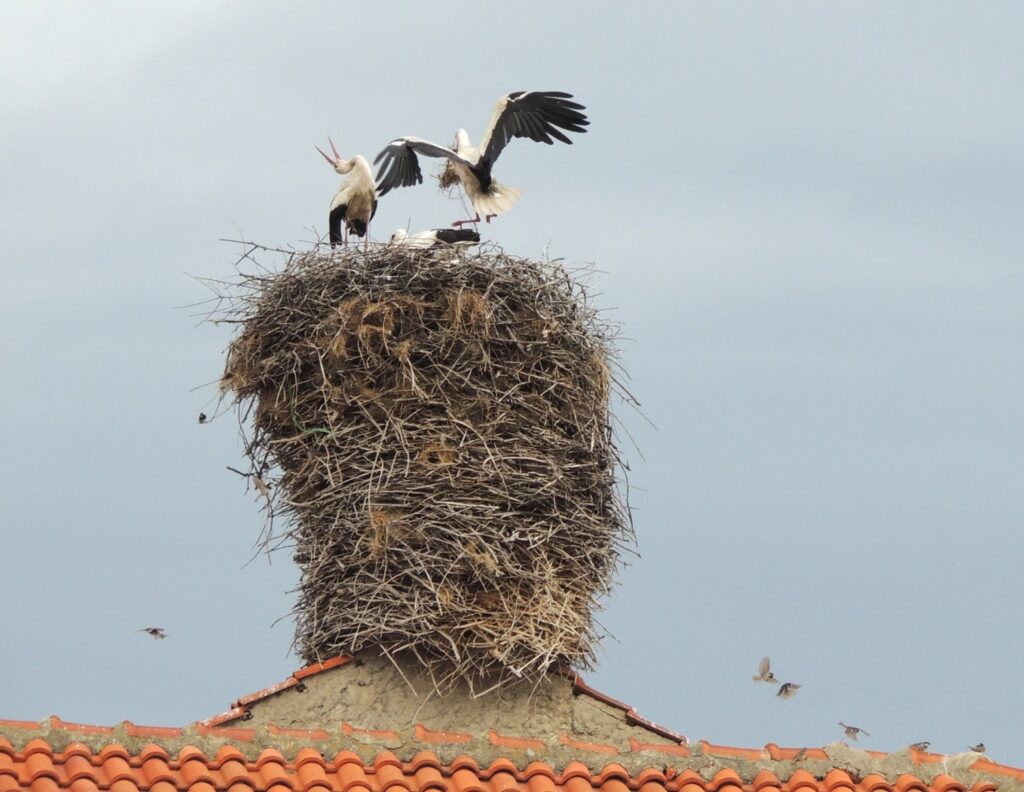
The White Stork is not afraid to build its nest near humans, often locating them high up on telegraph poles, church roofs or even people’s houses. Male White Storks return to the same nest every year, adding to its height until it can reach a whopping two metres. Their nests are so big that smaller birds such as sparrows and starlings often nest in the sides of these towering structures, creating a multi-storey, high-rise apartment block.
Today, Europe has a network of “Stork Villages” where storks are not only protected, but celebrated by humans. The district of Cheshinovo-Obleshevo in North Macedonia holds annual “Stork Day” festivities that draw crowds. The Macedonian Ecological Society (BirdLife Partner) works with energy companies in the area to re-model dangerous powerlines that risk electrocuting nesting storks, and the district has even updated their coat of arms to feature the White Stork.
2. Collared Sand Martin – life underground
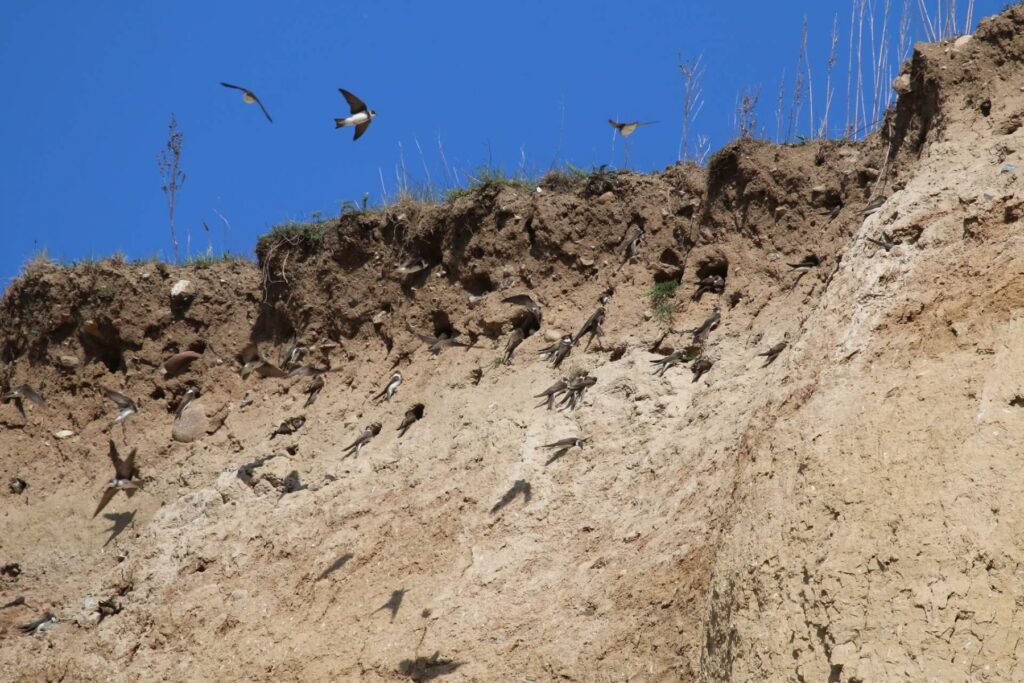
The stereotypical bird nest is one made out of twigs – but the Collared Sand Martin digs deep burrows into the sandy banks of riversides, lakes or coastal cliffs. They like to nest in large groups ranging from twelve to several hundred pairs, and their tunnels can reach over a metre long!
Sadly, in modern times we humans have modified our waterways, putting in flood control and anti-erosion structures, and these natural cliffs are being lost. Nowadays, quarries are one of the few remaining habitats where they can set up a colony. But quarries are also working landscapes that change constantly as new areas are dug up. Our sponsor HeidelbergCement solves this problem by attracting birds to cliffs in unused areas of the quarry, and making sure they keep their machinery a safe distance away.
3. Common Ringed Plover – hidden in plain sight
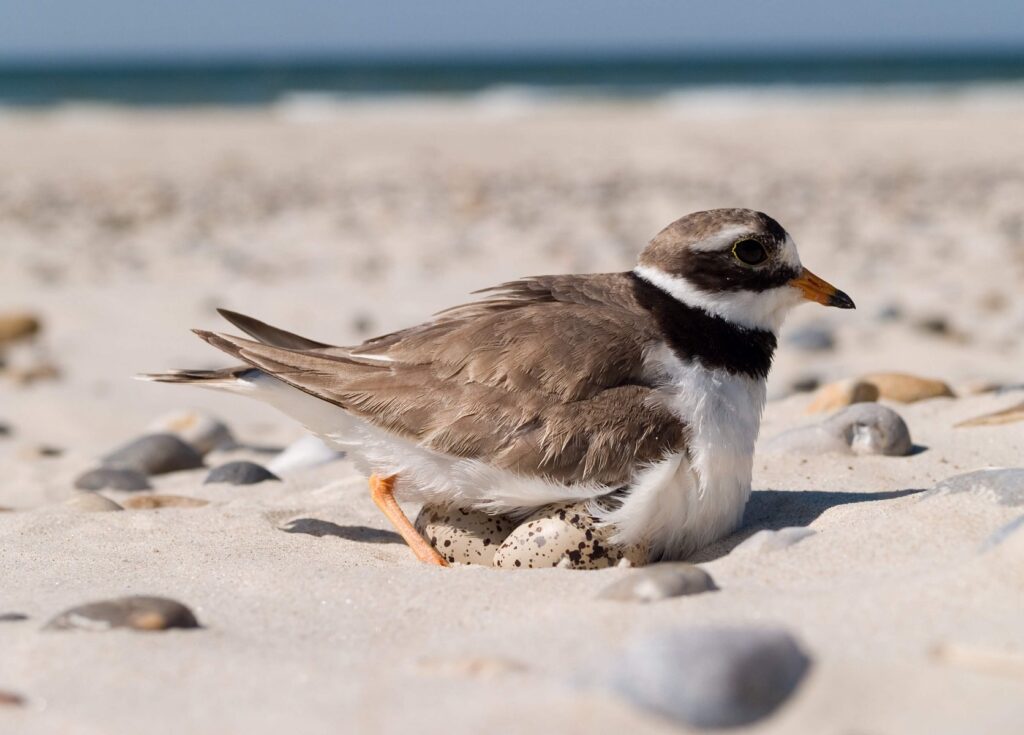
Most birds like to build their nests out of harm’s way – but Common Ringed Plovers have another strategy. They lay their eggs straight onto the beach, barely bothering to build a nest at all. Instead, the eggs are perfectly camouflaged to look like pebbles. Even the chicks, when they hatch, are grey and mottled like the stony shingle of the shoreline. If a predator does manage to sniff out the nest, the parents have yet another trick up their sleeve – they stagger away from the nest, calling out and feigning a broken wing, luring the predator towards them.
Unfortunately, the Common Ringed Plover’s population is declining due to wetlands being polluted or drained to make way for agriculture – something which is happening on every step of its migratory journey. The Ghana Wildlife Society (BirdLife Partner) runs school birdwatching trips to local wetlands, using the Common Ringed Plover as an ambassador for these vital habitats.
4. Barn Swallow – sculpted to perfection
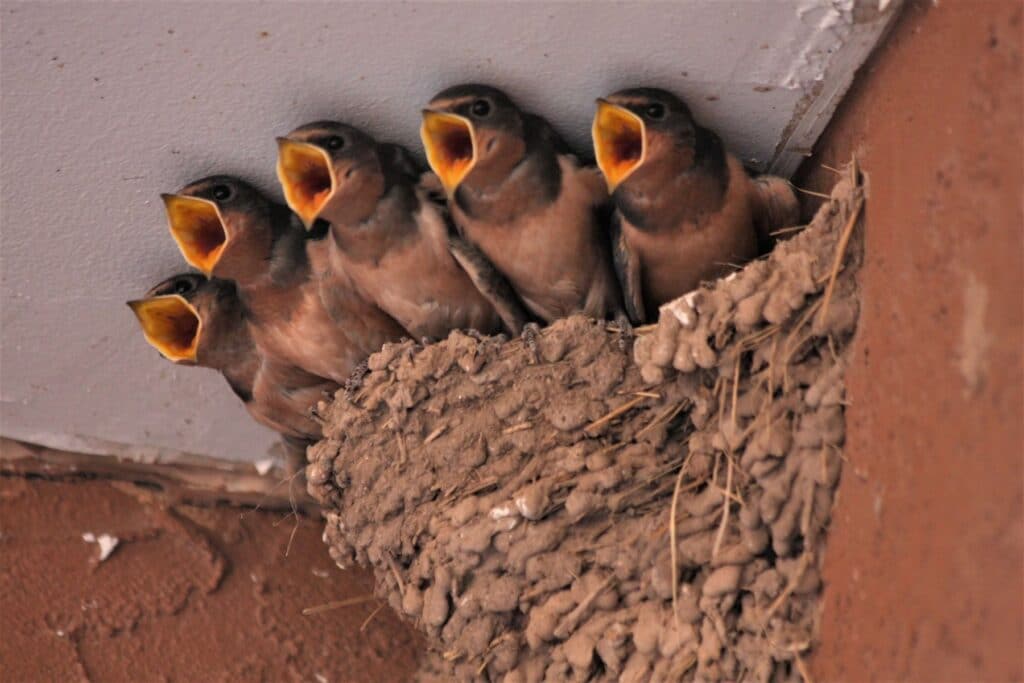
Barn Swallows used to nest in caves, but today they nest almost exclusively in small gaps underneath the rooves of houses, churches and – unsurprisingly – barns. Here, they build their distinctive cup-shaped nests out of hundreds of tiny pellets of mud that they collect in their beaks. Unfortunately, modern buildings have fewer suitable holes for the birds to use. Added to this, there is sometimes a lack of mud to build the nests from – especially in urban areas, or during unseasonably dry weather.
To combat this, Spring Alive runs workshops across Europe on how to create artificial nests. Our Serbian Partner Bird Protection and Study Society of Serbia even employed artists from a local ceramics museum to coach families on the best techniques to make these clay homes.
5. Common Cuckoo – a flying visit

The Common Cuckoo’s habit of laying its eggs in other birds’ nests is notorious worldwide, to the extent that the word “cuckoo” has become synonymous with unwelcome intruders. The deception starts with the adult female, whose plumage mimics that of the fearsome Eurasian Sparrowhawk. This scares off other birds, allowing her to lay her eggs in their nests unchallenged. In this way, the female can visit up to 50 nests in a single breeding season.
As a species, the Common Cuckoo can target more than a hundred different species of bird, including the Eurasian Reed Warbler, Pied Wagtail and European Robin. However, females tend to specialise in targeting just one species, laying eggs that are the same colour and pattern as those of their host.
The similarities end when the chick hatches. This baby grows big and fast, pushing the real eggs and chicks out of the nest, and making a loud call that mimics the sound of a whole nest full of chicks begging to be fed. This may sound shocking, but it’s worth remembering that cuckoos don’t understand that they are tricking other birds. They evolved this strategy because it helps their species to survive.
Despite this, the Common Cuckoo’s population is now in decline, and scientists across the world are satellite-tagging the species to understand the cause. The first cuckoo to be tagged by the Beijing Cuckoo Project (a collaboration between several conservation organisations, including BirdLife) was christened “Flappy McFlapperson” by local school children. Flappy became world famous, inspiring thousands of followers with her amazing journey from China to Africa.
6. Common Swift – life on the wing
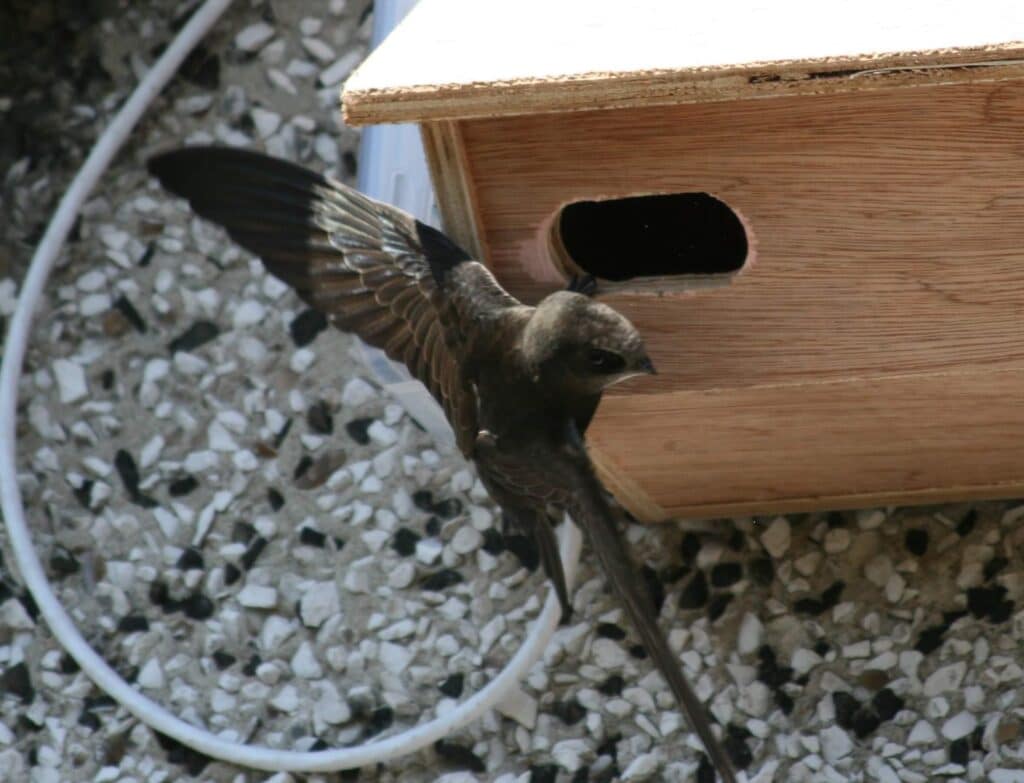
The Common Swift spends most of its life in mid-air, and never lands on the ground. You might be forgiven for thinking it has trouble finding nesting materials, but that is not so. This ingenious master of the skies builds its nests out of anything that can be gathered on the wing, including feathers, straw, hay and seeds, glued together with its own saliva.
Swifts form lifelong pairs, meeting up with the same partner every year after journeying thousands of kilometres from their wintering grounds. We humans love it when they arrive too, with their streamlined silhouette and screeching call heralding the start of spring. World Swift Day takes place on the 7th of June every year, and the town of Alange in Spain holds its very own Swift Festival in celebration of the birds.
Organisations across the Spring Alive partnership hold tutorials on how to build artificial nesting boxes to help these birds out – including this great instructional video from BirdLife Malta. Our Partner SEO/BirdLife even has its own recovery centre to help baby swifts that jump out of the nest prematurely during increasingly-common heatwaves.
7. European Bee-eater – a dinner date
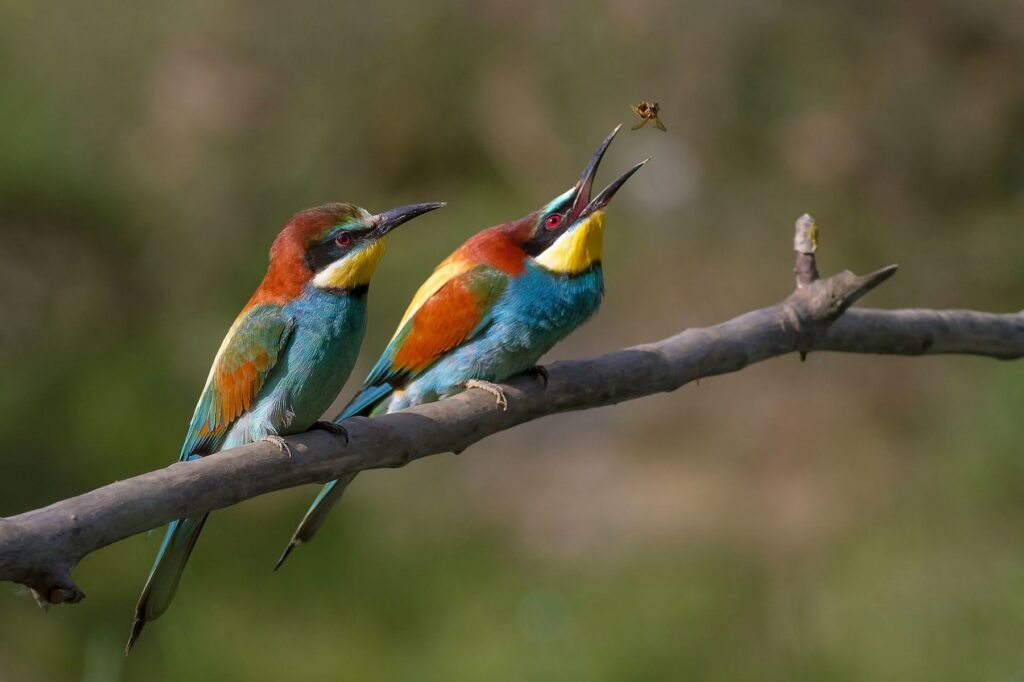
What kind of food would you eat on your ideal date? Curry? Pizza? Sushi? Or how about a delicious dead wasp? Don’t worry, your date has removed its sting by hitting it against a hard rock…
Fortunately, for the female European Bee-eater, this is the perfect way to win her heart. During courtship, the male will impress the female with his hunting prowess, depositing a series of bees, wasps, hornets, dragonflies and even butterflies at her feet. And while the male seems to do most of the work at the start of the relationship, when the eggs are laid the couple shares the duties equally, taking turns to incubate the eggs and feed the chicks in their sandy cliffside burrow. In fact, their next door neighbours in the colony might help out too!
These species may all have finished breeding, but Africa also has plenty of resident bird species that breed all year round – including the Grey Go-away Bird. Therefore, it’s still important to keep up to date with this year’s Spring Alive theme: “How should we protect birds’ nests?”. From letting your garden grow to building a nest box, there are plenty of simple actions you can take to help your local birds raise their chicks in safety.


